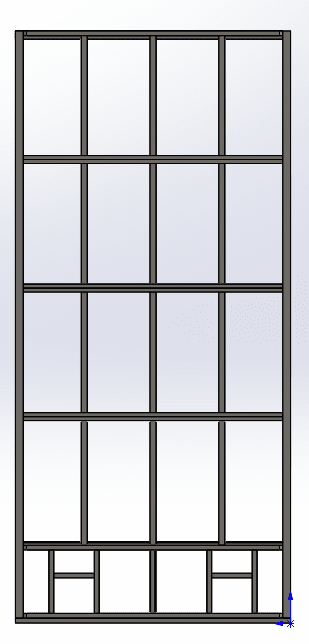MotoGoody
Structural
- Nov 15, 2022
- 6
Hello Everyone,
I have been visiting this forum for a little while for tips but finally was stumped enough to make an account and post!
I am working on a force analysis and it is so complicated I cannot figure out where to start.
My intuition:
The most independent members to me, counterintuitively, are the small verticals. They impart a concentrated load on the horizontal "double channels", which impart a concentrated load on the vertical channels forming the frame.
Please, if anyone could point me in the right direction I would greatly appreciate it.

I have been visiting this forum for a little while for tips but finally was stumped enough to make an account and post!
I am working on a force analysis and it is so complicated I cannot figure out where to start.
My intuition:
The most independent members to me, counterintuitively, are the small verticals. They impart a concentrated load on the horizontal "double channels", which impart a concentrated load on the vertical channels forming the frame.
Please, if anyone could point me in the right direction I would greatly appreciate it.

